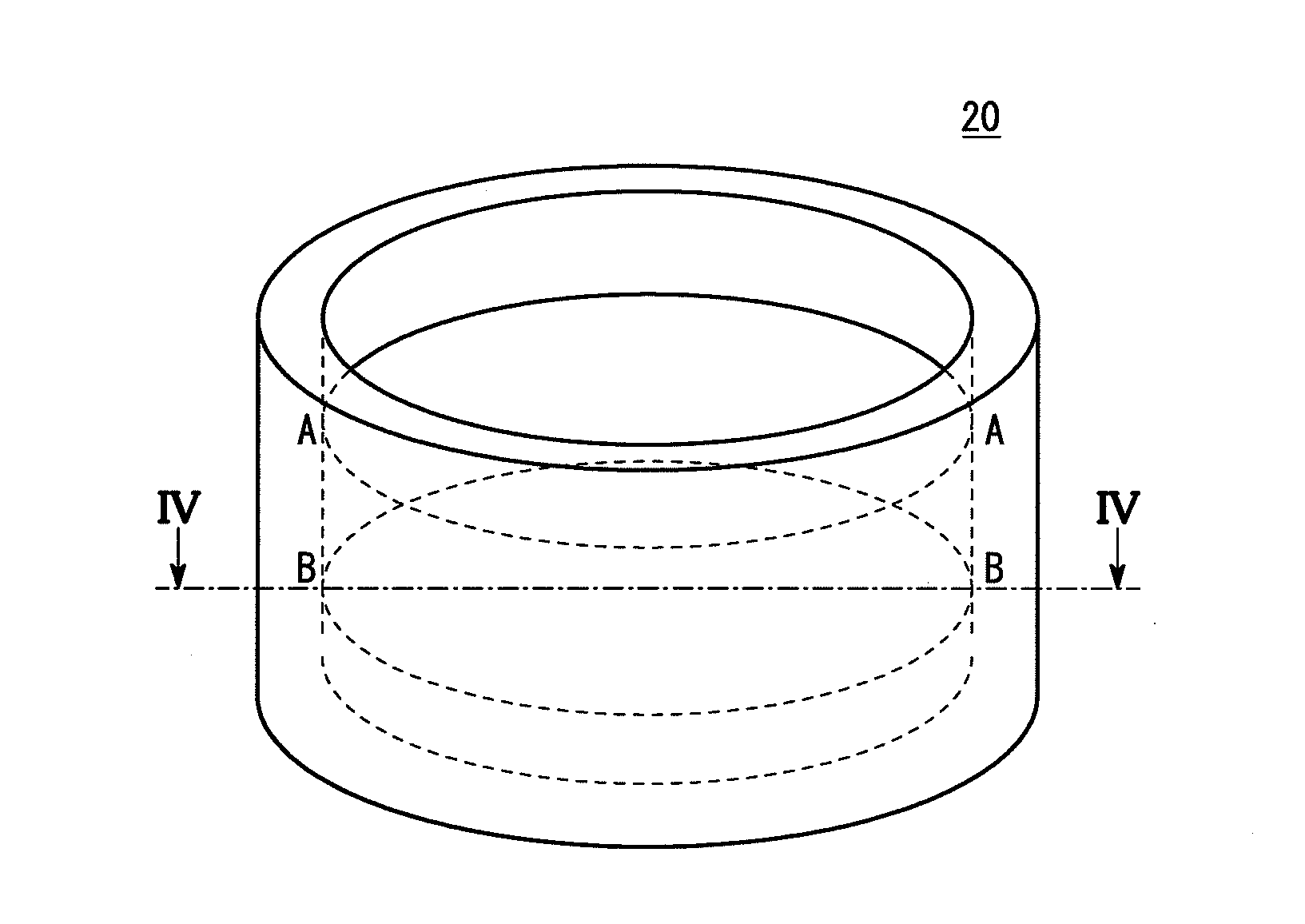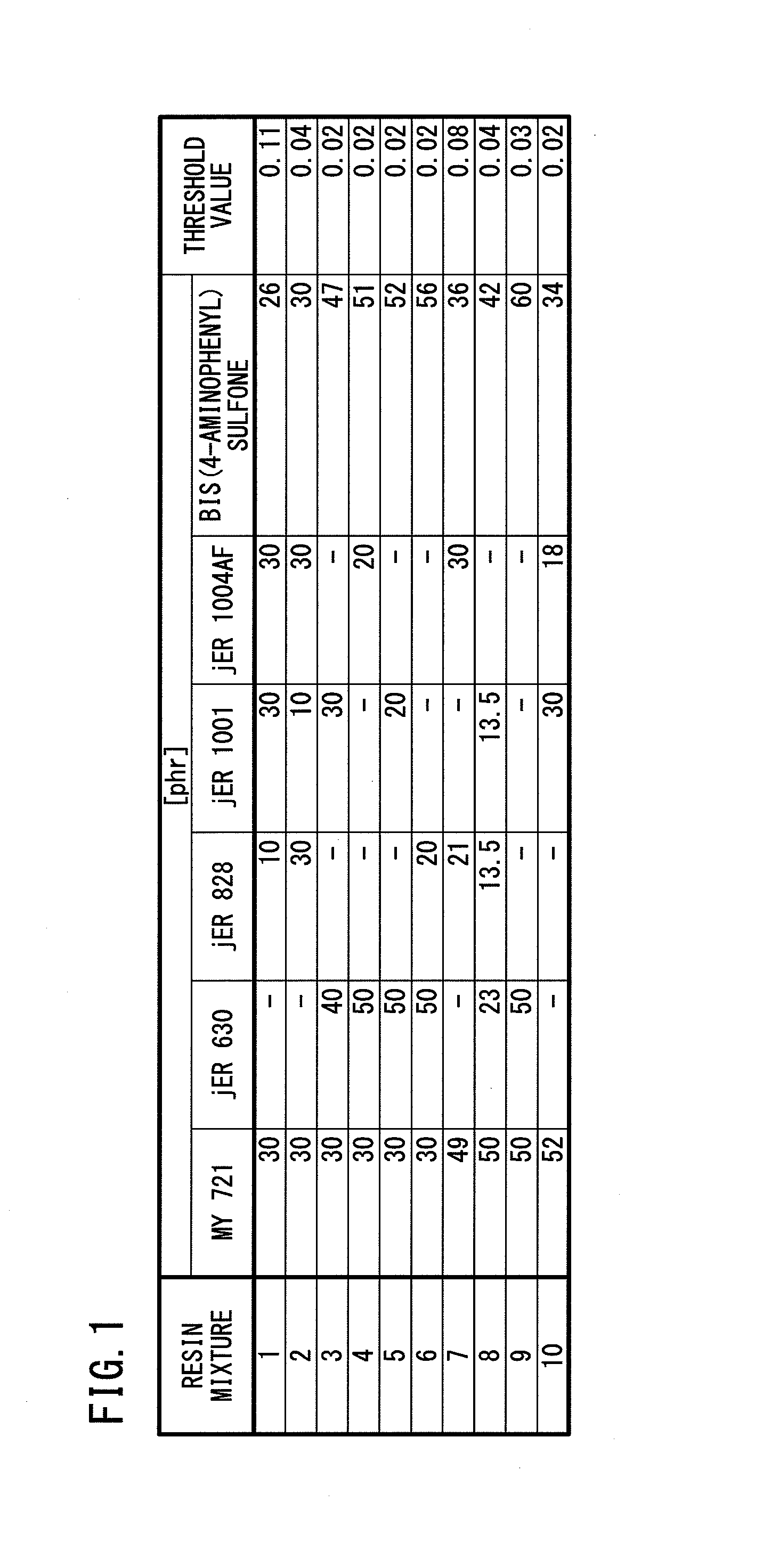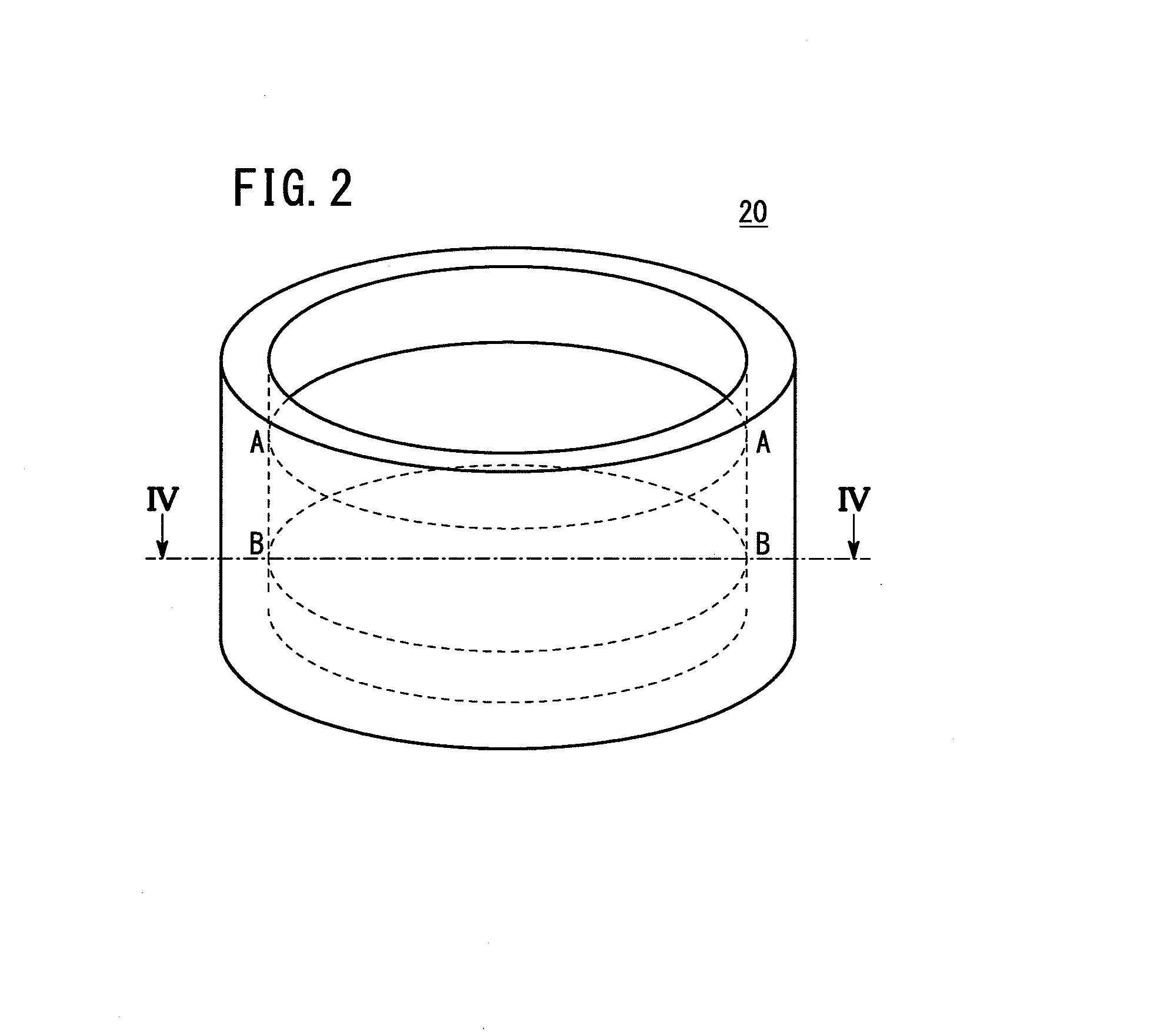Method of evaluating dispersion degrees of mixed epoxy resins
a technology of epoxy resin and dispersion degree, which is applied in the field of evaluating the dispersion degree of mixed epoxy resin, can solve the problems of difficult to calculate the above-described area ratio using the tem, the inability to evaluate the dispersion of the entire kneaded resin mixture, and the inability to readily evaluate the dispersion degree of mixed resin, etc., to achieve convenient and quantitative evaluation, easy to obtain, and sufficient dispersion degree
- Summary
- Abstract
- Description
- Claims
- Application Information
AI Technical Summary
Benefits of technology
Problems solved by technology
Method used
Image
Examples
Embodiment Construction
[0049]An embodiment of the epoxy resin dispersion degree evaluation method of the present invention will be described in detail below with reference to the accompanying drawings. In this embodiment, resin mixtures having improved properties, suitable for use in a structural material for an aircraft member or the like, are evaluated by the method.
[0050]In this embodiment, each resin mixture contains aromatic epoxy resins and a hardener to be hereinafter described. The resin mixture used in the epoxy resin dispersion degree evaluation method of the present invention is not particularly limited thereto, and may be prepared by mixing a plurality of epoxy resins having different chemical structures or molecular weights. Furthermore, the hardener in the resin mixture is not particularly limited to the substance to be hereinafter described, and the resin mixture may contain no hardeners.
[0051]In this embodiment, the resin mixture to be evaluated with respect to the dispersion degrees is ob...
PUM
| Property | Measurement | Unit |
|---|---|---|
| weight ratio | aaaaa | aaaaa |
| height | aaaaa | aaaaa |
| total weight | aaaaa | aaaaa |
Abstract
Description
Claims
Application Information
 Login to View More
Login to View More - R&D
- Intellectual Property
- Life Sciences
- Materials
- Tech Scout
- Unparalleled Data Quality
- Higher Quality Content
- 60% Fewer Hallucinations
Browse by: Latest US Patents, China's latest patents, Technical Efficacy Thesaurus, Application Domain, Technology Topic, Popular Technical Reports.
© 2025 PatSnap. All rights reserved.Legal|Privacy policy|Modern Slavery Act Transparency Statement|Sitemap|About US| Contact US: help@patsnap.com



